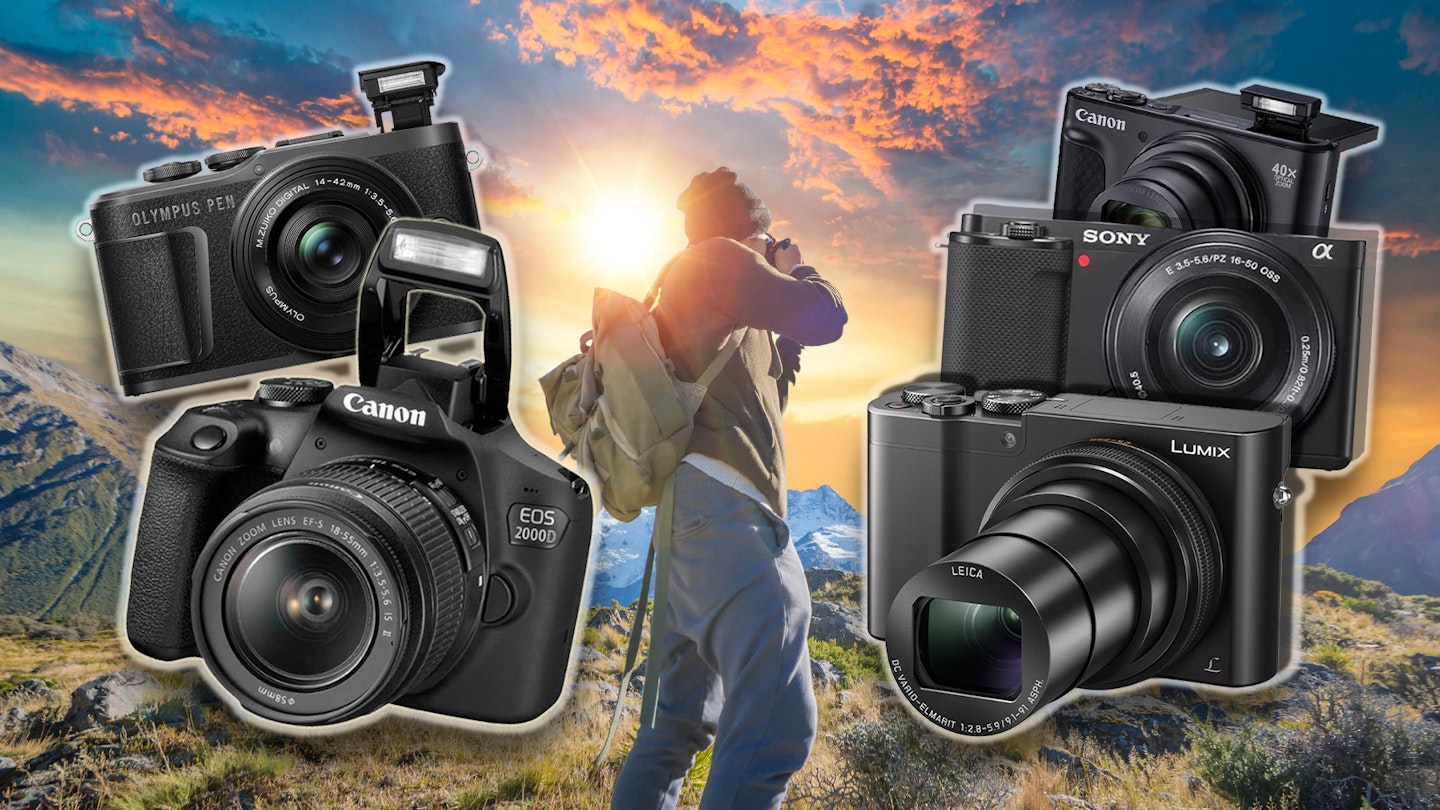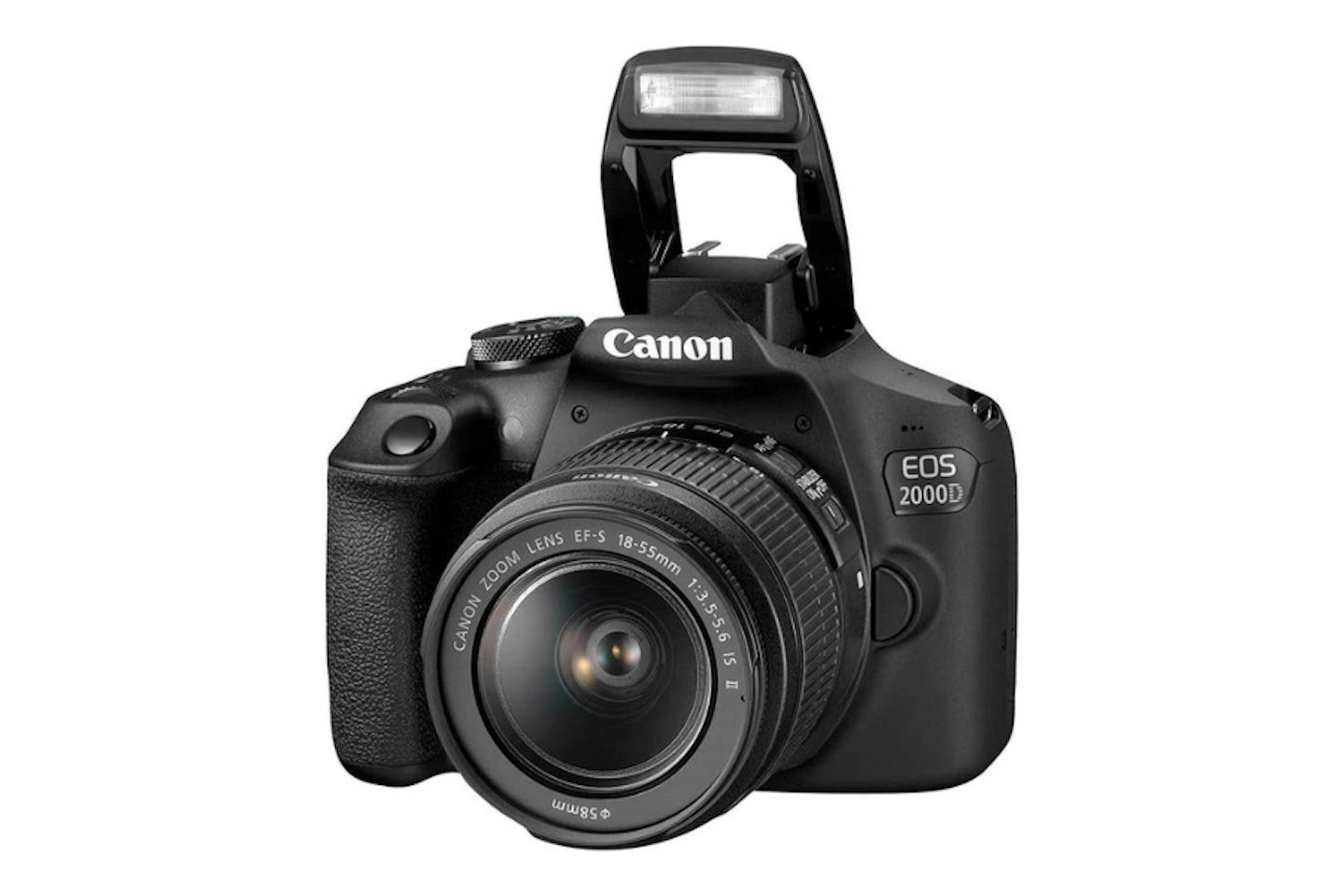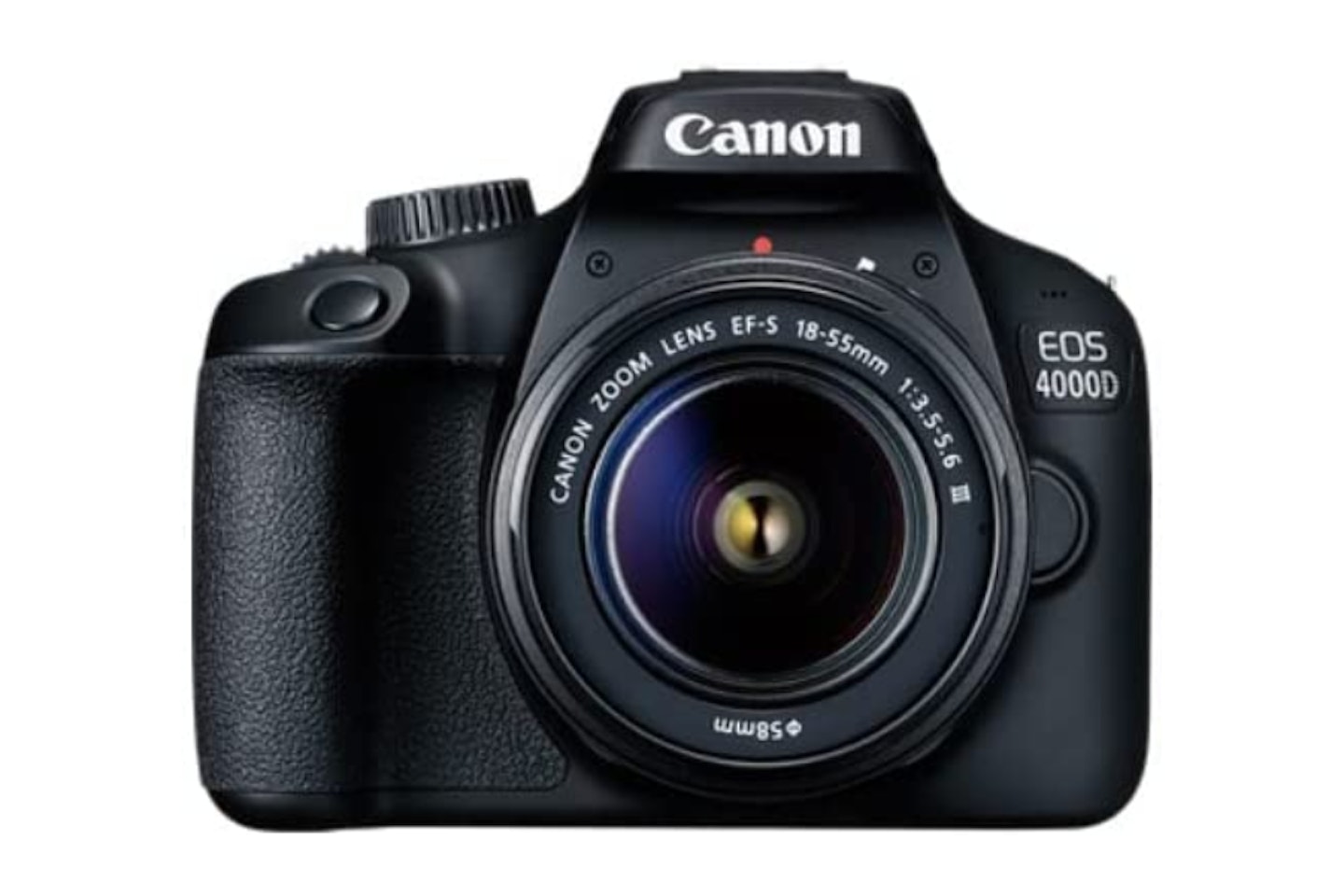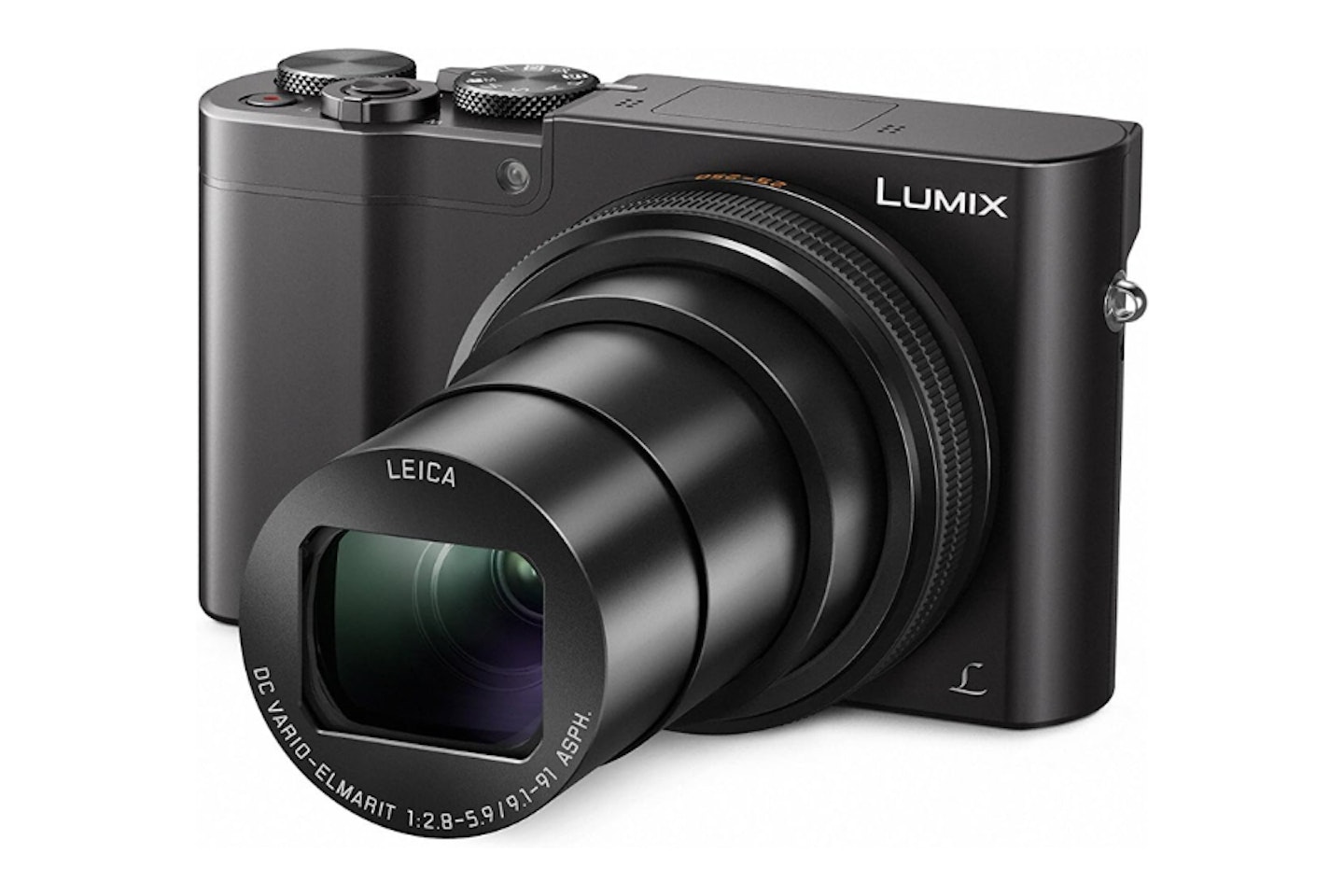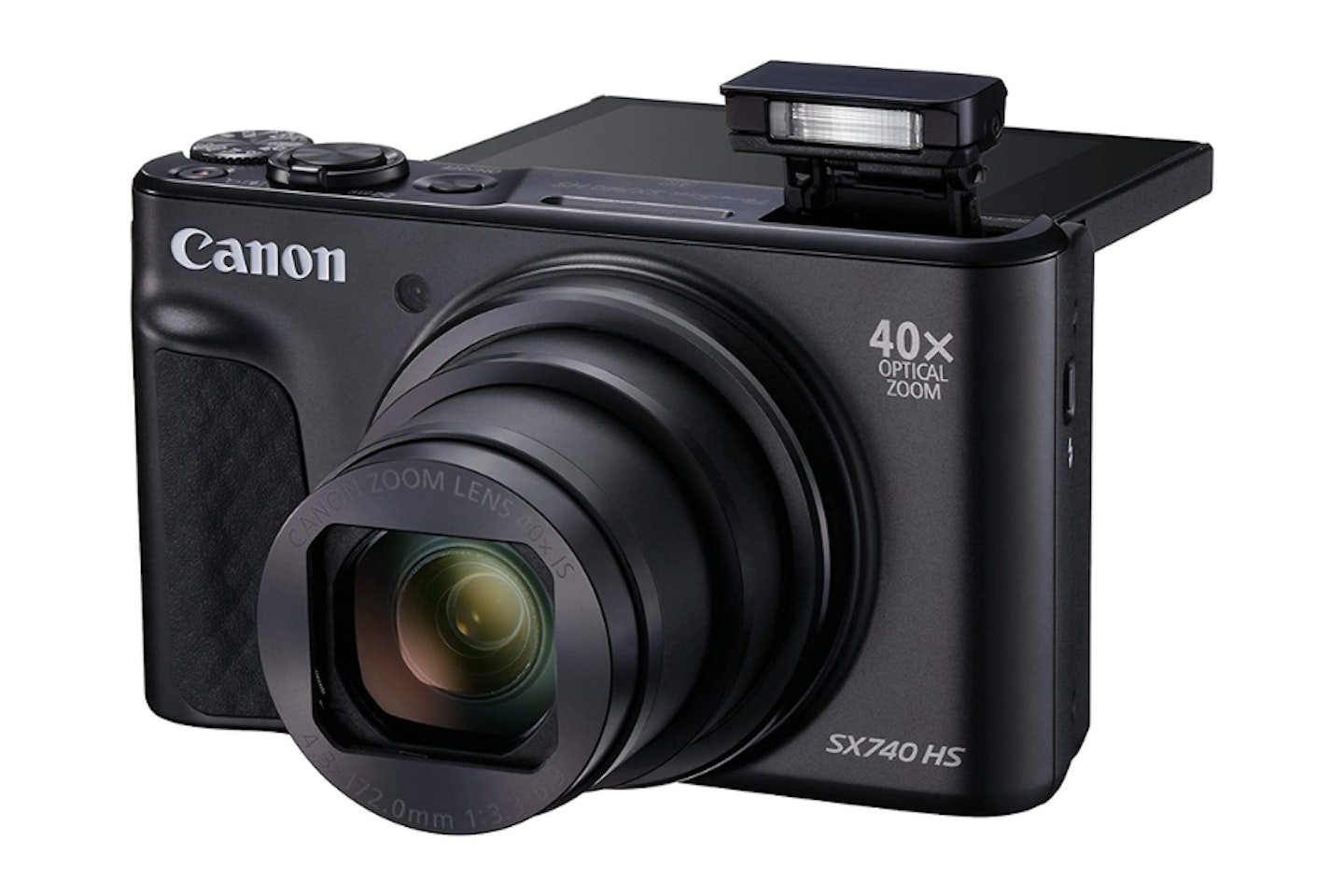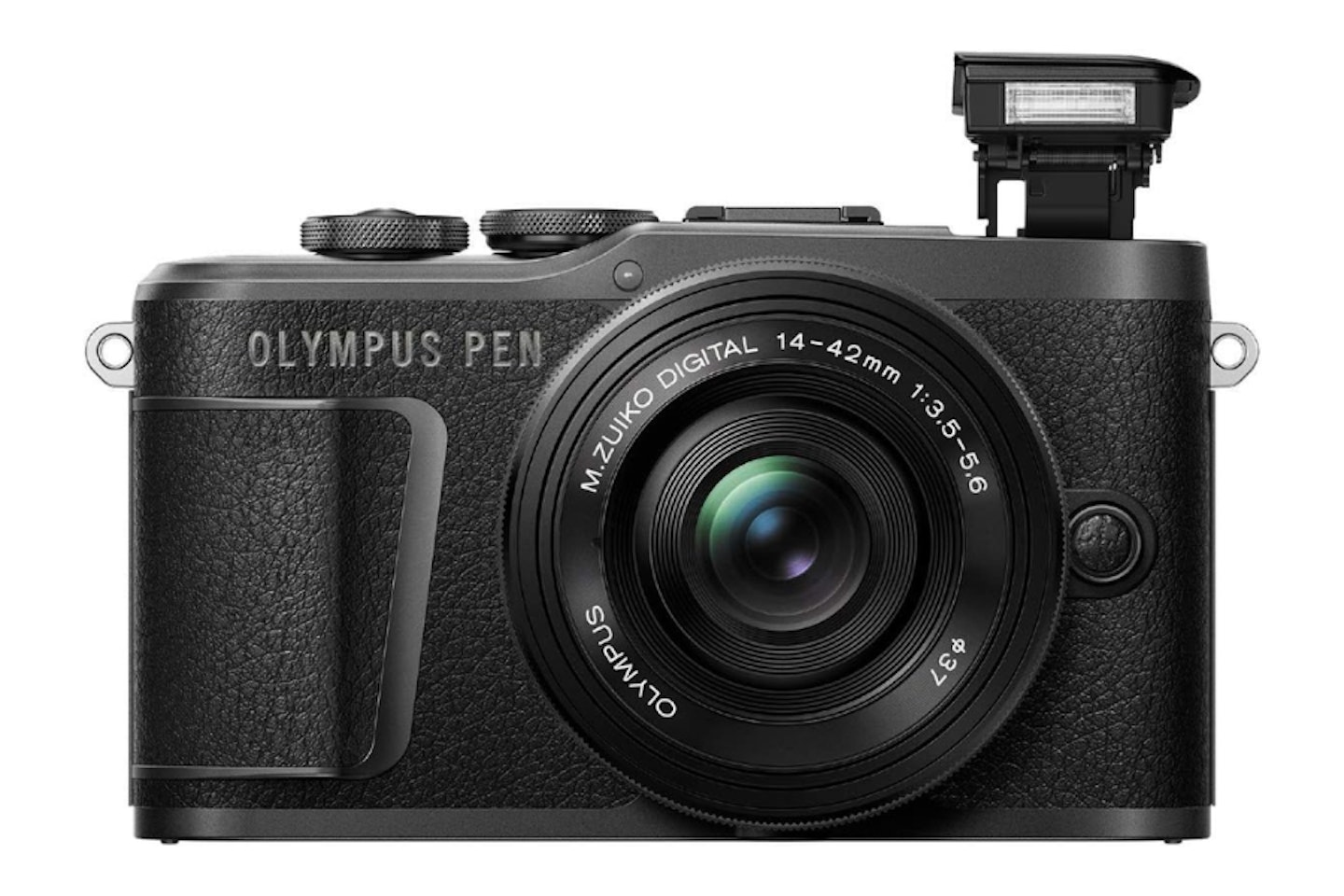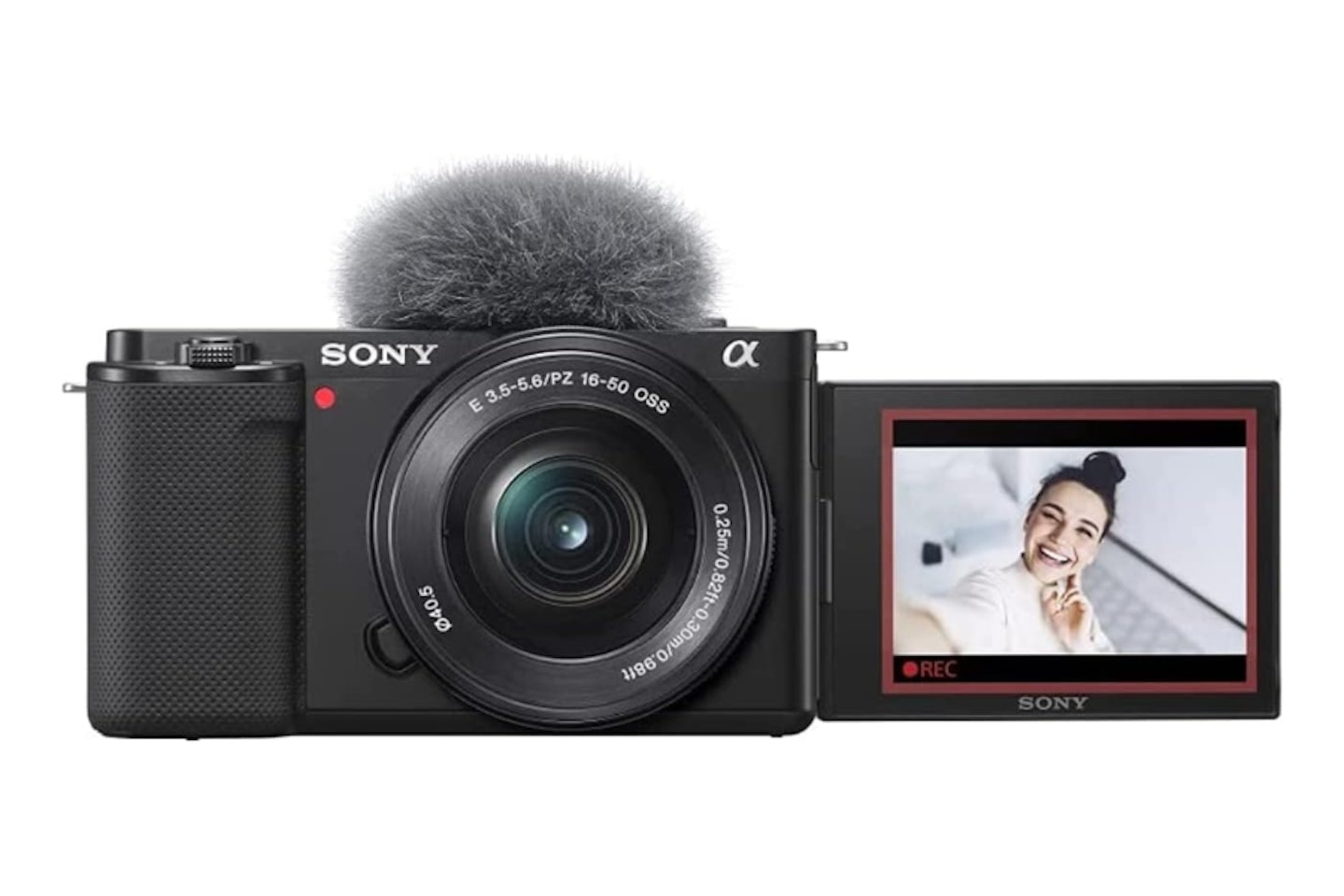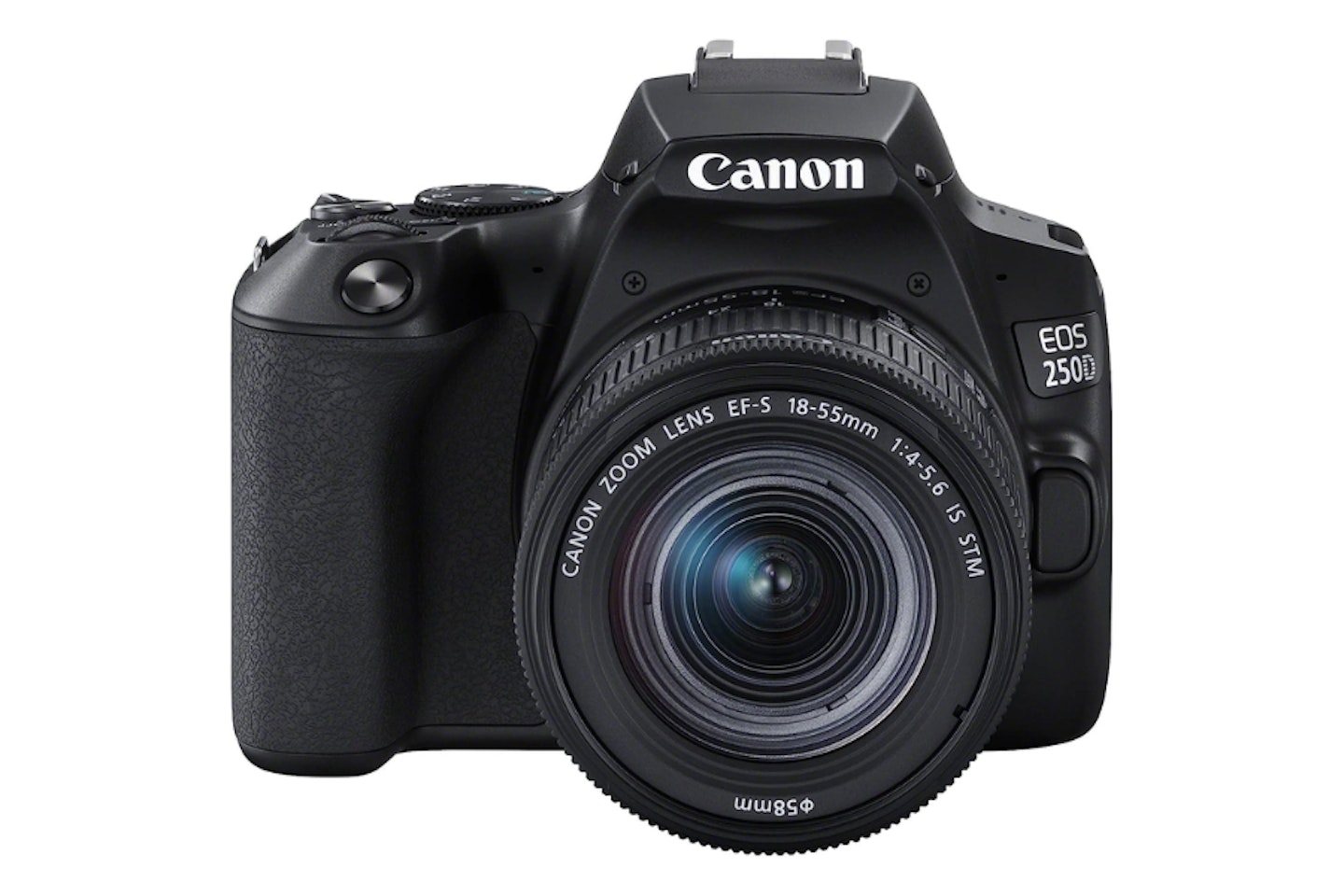The best entry-level cameras for you aren't just the ones you can afford, and this is especially true if you’re just stepping into the world of photography for the first time. Choose well and your high-resolution digital camera will become your new creative partner, always ready to capture the scene just how you want it.
But, to begin with, it’s going to seem daunting. Do you go DSLR, or are mirrorless cameras the way forward? Should you stick with a compact camera, or invest in a bridge camera with a superzoom lens? And what do all these terms actually mean?
Best entry-level cameras of 2023 at a glance
• Best overall entry-level camera: Canon EOS 2000D - View at Amazon
• Best Sony entry-level camera: Sony Alpha ZV-E10L - View at Amazon
• Best Canon entry-level camera: Canon EOS 250D - View at Amazon
• Best Panasonic entry-level camera: Panasonic Lumix DMC-TZ100 - View at Amazon
After the cameras, we've put together a guide to help you frame up what's important when choosing. That also includes unpacking some of the technical jargon for you so you can make an informed choice as well. You might be setting your signs on particular subject matter, like landscapes, or portrait photography. Understanding more about lenses and features is essential in making your choice the right one.
Our experts here at What's The Best were all beginners once, so we know what to look for in entry-level digital cameras. Not everyone enters at the same level though, so we've tailored our pick of the best to match. We have options for complete newbies through to those who know a little about photography but want to upgrade from an automatic or smartphone camera. Viewfinder's at the ready, let's snap to it.
Best entry-level cameras in 2023
Best overall entry-level camera
Description
The slightly more advanced version of the 4000D featured below, this offering is a little more up-to-date, with a price tag to match. It boasts a 24.1MP APS-C sensor, EF-S 18-55mm f/3.5-5.6 IS II lens and a 3-inch 920k-dot rear LCD screen. However, beyond this, and a few cosmetic upgrades, it’s a very similar story. You still get the 9-point phase detection autofocus system, 3fps continuous shooting speed and native ISO range of 100-6400. With so many features at your fingertips, it's no wonder this made the top spot on our lineup of the best Canon DSLR cameras.
As you’d expect, the Canon has an in-built flash, which keeps it in line with the rest of the competition and helps when shooting in low light, where an extra pop can be incredibly handy. It also captures Full HD 1080p video at 30fps, which isn’t stand-out but is handy to have if you’re looking to shoot some moving images. Overall, there’s little to separate this from the 4000D, except build quality and megapixels. If you have the budget this is the superior choice, but if you’re looking to spend less, it’s the 4000D.
Pros
- 24.1MP for stunning shots
- Well-designed and easy to handle
- Guided menus ideal for beginners
- Excellent choice of compatible lenses
- Canon build quality
- Responsive autofocus
Cons
- Lacking a touchscreen
- Only 3fps burst shooting
- No 4K video
Best entry-level bridge camera
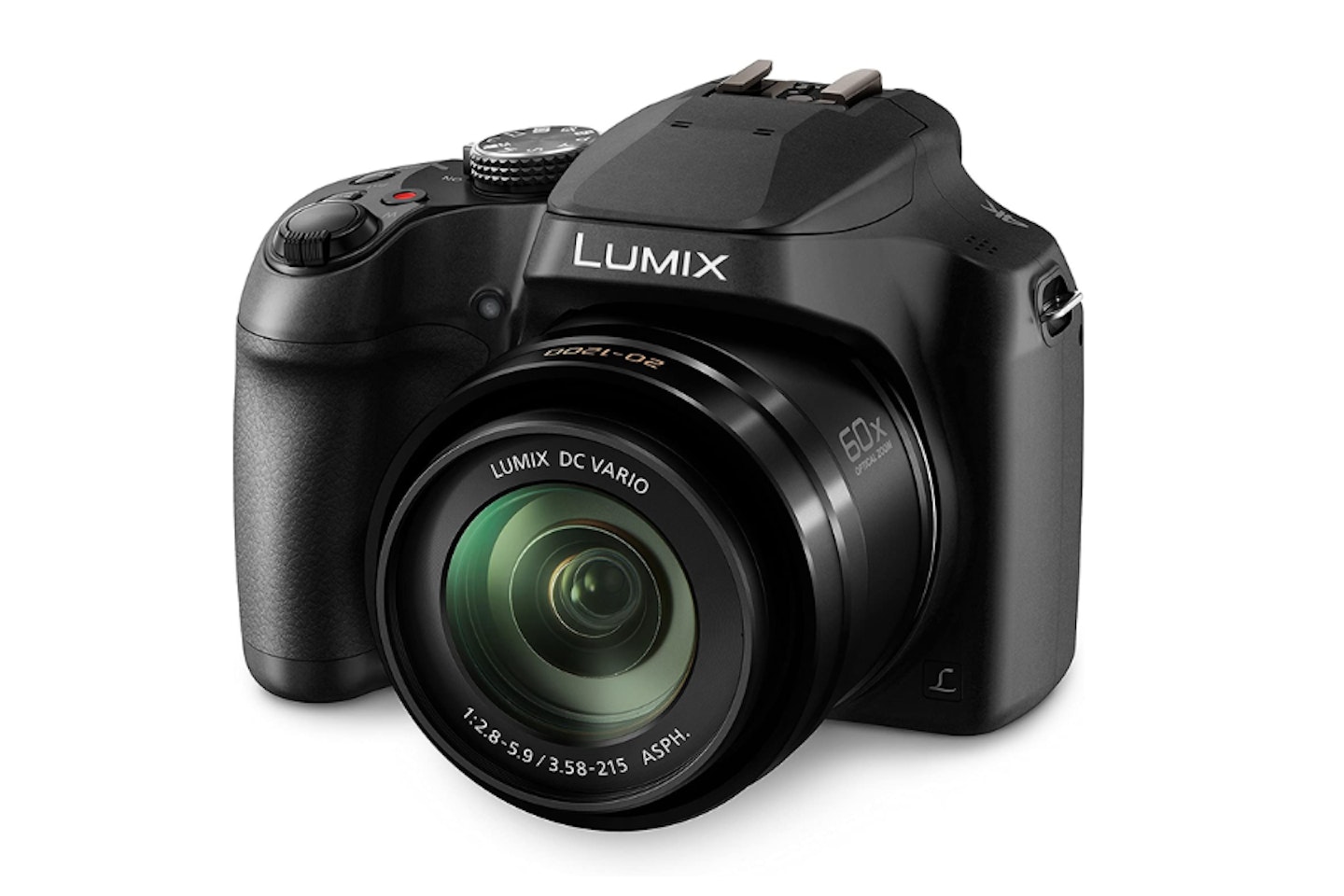
Description
For those new to cameras, a 'Bridge' camera is a halfway house between a compact automatic camera and a more fully-featured DSLR camera. That makes the Lumix DC-FZ82 from Panasonic an excellent choice for balancing price, specification and the kind of manual controls you'd normally see on a more expensive model. The 18MP sensor is more than up to the task, and of course, you're getting the solid build and performance you'd expect from the Panasonic brand.
One concession you will make at this price point is the fixed lens - but it is compatible with various lens converters that can be easily attached. This camera also has an outrageously flexible 60x optical zoom lens that gives you 20mm - 1200 mm at F2.8 - 5.9. If you want the kind of control over exposure, depth of field, manual focusing and more for your photography outings, this is the entry-level camera for you.
Pros
- Great for manual control without too much complexity
- Ultra-wide 20-1200mm 60x zoom lens
- Powered optical image stabilisation
- Lens converters can be added
- 4K video
Cons
- Fixed lens
- Touchscreen is fixed
- No external mic input - you will need an external mic and compact recorder for professional sound
Best budget entry-level DSLR camera
Description
The most budget-friendly DSLR currently available, Canon is a popular choice for beginners. The 4000D manages this price by sacrificing some of the construction quality. However, it can still pack a punch, thanks to a tried and tested 18MP APS-C sensor, borrowed from the popular 1300D. The 4000D offers shooters a 9-point phase detection autofocus system, 3fps continuous shooting speed and a 100-6400 ISO range. There’s also a handy guided menu system – great for learning.
If you like to experiment, there’s a range of Creative Filters, such as Toy Camera or Fish-eye, while the Scene Intelligent Auto will help you get the best shots from the start. You’re able to switch between different Picture Styles, such as Portrait, Landscape or Monochrome, with each adding a different look to your shots. The kit also comes with an EF-S 18-55mm f/3.5-5.6 III lens, which is a great everyday walkabout optic. While maybe not the best in test, looking a bit cheap and weathered against the competition, it is very budget-friendly.
Pros
- Guided menus
- Easy to use
- Ideal on a tight budget
Cons
- Low-res LCD
- Bit outdated
Best Panasonic entry-level compact camera
Description
Panasonic has an excellent track record when it comes to high-spec compact cameras with lots of easily accessible manual settings. The DMC-TZ100 is a particularly refined example, with a Leica zoom lens. Unlike others here, it's not interchangeable - but it is 25-250mm, more than enough range to suit a host of subject matter.
Key for beginners is the manual controls at the top - much like a full-sized DSLR, you have quick access to various shooting modes via the top dial. The back includes a large touchscreen with manual shortcut buttons for preset functions. There's a handy focus-lock button too, for even more control over your image - indispensable when you don't have a lens with a manual focus ring. Lastly, you have a 20.1MP 1" sensor, 4K video and an amazing feature that lets you take a photo and choose your focus later.
Pros
- 20MP
- Leica lens
- 1" sensor
- Compact and lightweight
- 10fps burst shooting (5fps in AF mode)
Cons
- Focal length
- Touchscreen based focusing
- Manuals are not the best - Google instead
Best low-budget basic entry-level camera
Description
Despite seeming like the least advanced here, the Canon Powershot S740 HS has more than a few tricks up its considerably compact sleeves. Importantly, this will shoot 20.4MP pictures - so it's right up there with some of the best on this list for resolution. The lens has a 40x zoom and optical stabilisation built in, giving you a decent focal length of 24-960mm. In terms of aperture control, this camera will cover the f/3.3 – f/6.9 range - good enough at entry-level for a compact, but later you may want to upgrade to a full DSLR if you want more control over depth of field.
It’s aimed at those stepping up from a smartphone, so useful features like a tiltable screen will help you get things framed up comfortably. Another useful feature is being able to choose between auto and manual focus. It'll also fire off up to 10fps in continuous shooting mode. In terms of practising your photography skills, what you'd normally adjust manually on a DSLR - like aperture, ISO and manual focussing - is done electronically here; so, this Powershot is a great way to hone your skills before splashing out. Lastly, if you're into video you'll even be able to shoot in 4K.
Pros
- Compact and lightweight
- Good 40x zoom lens, fuss-free for beginners
- Enough manual settings to be useful at entry-level
- Flippable rear screen
- 5-axis stabilisation
- Electronic manual focus
Cons
- F-stop range doesn't compete with the larger cameras here
Best Olympus entry-level camera
Description
Don't be fooled by the PEN E-PL10's retro looks, it's full of features including image stabilisation and a 16.1MP sensor.
Here, Olympus has provided a great entry-level option to those photographers who like the idea of a smaller camera but still want big camera features, like interchangeable lenses and manual settings. It's a mirrorless Micro Four-Thirds camera. The number of interchangeable lenses on the market is excellent as, thankfully, any Four-Thirds camera can accommodate any Four-Thirds lens no matter the brand.
We would have liked to have seen a standard lens with a higher zoom, but the 14mm - 42mm is flexible enough for most landscapes and mid-range subjects. The robust build quality, classic design and availability of lenses for the system increase this camera’s appeal - as do a helpful range of modes that will walk you through the various settings. All in all, this is a perfect balance between lens flexibility, manual control and automatic functions.
Pros
- Helpful modes for beginners
- RAW format support
- Excellent choice of lenses
- Beautiful design and robust Olympus build
Cons
- No viewfinder
- Not the highest resolution on our list
Best Sony entry-level camera
Description
Sony's Alpha ZV-E10L has some seriously impressive features for such a compact model. Primarily aimed at video bloggers and YouTubers, it would be easy to overlook the fact that this is an equally capable stills camera. Sony has packed a great deal of technical know-how into this, including its own interchangeable lens system for maximum creative choice. There are over 60 different lenses at the time of writing. The resolution and APS-C sensor are excellent, with 24.2MP at your disposal.
Lens-wise, such as 11fps shooting and lightning-fast AF. The camera isn't short on style either. It has a premium feel, and it delivers where it counts, with many features rivalling even the best DSLRs on the market. Our only real criticisms of the Alpha ZV-E10L would be the price for beginners on a budget - but if you can stretch to it, this is one impressive piece of kit that we wouldn’t hesitate to recommend to any experienced beginner or enthusiast-level photographer.
Pros
- Excellent 24MP resolution
- APS-C sensor
- Compact body
- Plenty of lens options
- Also a real performer when it comes to video
Cons
- Battery life is medium, buy a spare
- Video streamers will need to look elsewhere
Best Canon entry-level camera
Description
For many Canon is the go-to brand for DSLR cameras. As we discovered when we reviewed the Canon EOS M50 MkII, you certainly can find some capable kit in the sub-£1000 bracket. For a start, Canon lens mounts are an open standard, so you'll have more choices than you can imagine for future upgrades. Although this is what many beginners would call a professional stills camera, it's really the most accessible and practical on-ramp to much better DSLRs down the line. The important thing here is that you'll have access to all of the tactile controls and features that the pros use - manual focus ring, f-stop and ISO control, plus a great deal of in-camera adjustments.
And that's where Canon cameras really shine for the entry-level DSLR user: the menus. A guided menu system doesn't just tell you where to find settings, it'll also remind you of what each setting will do to your shot. As a learning companion, you can't do better. This is a flexible, fully manual camera for serious beginners and novices alike. Professional 24.1MP stills and 4K video are now within your reach.
Pros
- Guided menus
- Canon build quality
- Easily swapped lenses
- Plenty of manual settings
- Ideal first 'serious' DSLR
Cons
- Newer models have more features- for a price
Best entry-level cameras of 2023: Buyer's guide
Stick to your budget and buy wisely
If you've already been scouring the internet for affordable cameras for beginners you've probably found dozens of convincing-looking cameras from unknown brands already. When it comes to the best entry-level cameras, price is going to be a huge factor for many. But don't be fooled. Engineering the optics, mechanisms and hardware that make a capable, solid, and reliable camera is a true specialism.
The best brands, like Canon, Nikon, FujiFilm and others, have been doing this expertly for decades. All of our recommendations come from established brands and, as long as you have a modest budget in mind, you could choose any of them and be well on your way as a photographer.
And on the subject of budget, it's easy to get wooed by the ever-expanding list of technical features, AI enhancements, and monstrous megapixel measurements. But resist the urge to overspend. As a beginner or novice, you're going to need to learn the ropes before you can really capitalise on the powerful kit you've just bought; so our advice is to keep things simple now and upgrade later once you've discovered what kind of photographer you are.
Invest in your kit with accessories
Where photography is concerned there's a dizzying amount of choice when it comes to extras. Not all extra accessories are going to be useful for beginners, though. For instance, you can quickly go out and blow a lot of cash on a wide-aperture prime lens - but there's little point unless you know how to get the best out of it. As a beginner, there are much cheaper and more essential additions you should hunt down first.
If your camera lens supports filter attachments, essentials include a UV filter to protect your lens as well as improve clarity. You might also go for a polariser to prevent nasty reflections. And, of course, a camera cleaning kit so that you can look after your lens and camera body with the right brushes, cloths, and supplies.
Consider your lens options
Possibly the most exciting items you can buy for your photographic arsenal are lenses. If your selection from the best entry-level cameras has an interchangeable lens, first check the type of fitting your camera will support. Many manufacturers, such as Sony, have their own proprietary lens systems and ranges, so you should partly base your choice of camera on the lenses available for it.
Protect your investment
No matter whether you've opted for a compact camera or a full-size DSLR with additional lenses, we can't stress enough how important it is to budget for one of the best camera bags you can afford. Yes, most cameras come with straps and lens covers - but nothing beats keeping your prized kit in a properly cushioned bag or case. If you're planning on doing a lot of outdoor shoots, make sure you have waterproofing or a rain cover for it too. And don't forget extra space for filters, spare batteries and the like.
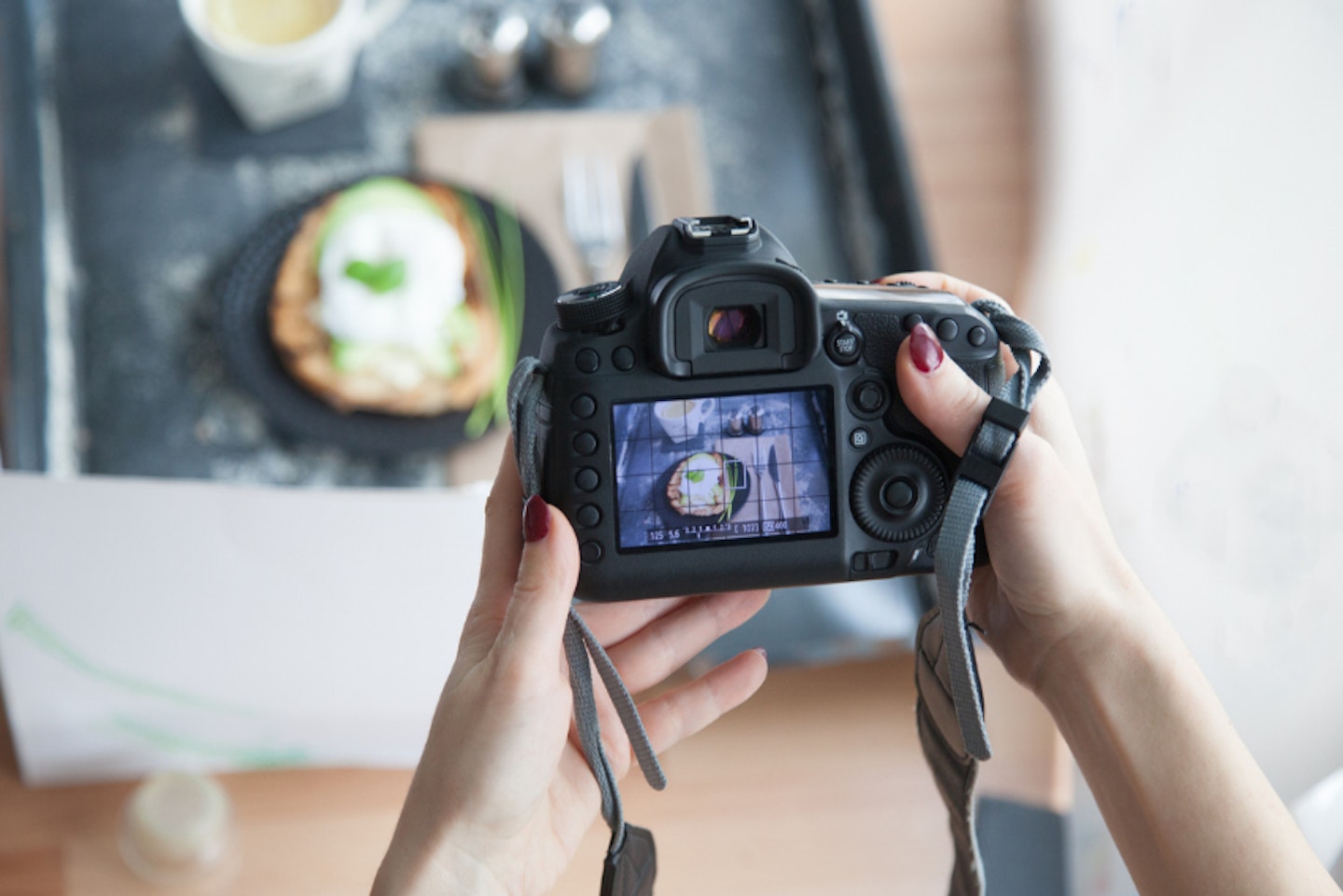
Best entry-level cameras: Frequently asked questions
What's the best entry-level camera for beginners?
As we mentioned earlier, this is going to come down to how comfortable you are with cameras and their settings. Not to mention basic photography principles like depth of field, ISO, aperture, and shutter speed. Your choice is also going to be influenced by what you're interested in photographing - and lens options are going to be important here. If you're totally new to photography (other than the point-and-click variety) we recommend a simple camera like the Canon SX740 HS PowerShot above. It has enough manual control to let you practice the basics. If you're the hands-on techie type with some knowledge under your belt, go for the Panasonic Lumix DC-FZ82 - it's got plenty of DSLR-type control without too many expensive extras.
Can a beginner use a DSLR camera?
Absolutely. Just because a camera is capable of a lot of manual adjustments doesn't mean you need to use them all. If you put some time into reading up on your camera's capabilities, even the most complex-looking DSLR can suddenly become easier to use than you think. But if you're put off by having so much control at your fingertips right at the start, opt for one of the compact cameras or bridge cameras instead. They'll give you all the essentials you need to succeed, and fewer advanced features aimed at experienced professionals.
What's the best entry-level camera for action photography?
Some of the best budget cameras for action shots are those that can handle low light well. More light entering the lens will enable faster shutter speeds; and without having to change your ISO setting so high that you get serious grain. Faster shutter speeds mean you'll avoid the dreaded motion blur with fast-moving subjects like cars, skateboarders or various sports.
How do I take photographs without reflections?
Lens attachments, providing your choice of camera supports them, include filters to achieve various effects and enhancements. One of these is circular polarisers. They control the light as it enters the lens, filtering out any crossover in light polarisation. This way you can take photos of fish in a pond, or a TV screen, without bright reflections getting in the way.

Best entry-level cameras: Photography jargon-buster
Shutter speed
This is the length of time that the camera's shutter - the part that shields the sensor from the light - remains open. The longer the shutter is open, the slower the shutter speed - it also allows more light to reach the sensor. This speed is measured in seconds and fractions of a second. Therefore, if you want to take a shot of a fast runner, but don't want any motion blur, you'll need a faster shutter speed.
ISO (or 'film speed')
Back in the days of film cameras, the film itself was more or less sensitive to light - expressed as an ISO rating. The higher the ISO, the more sensitive to light. So, a film with an ISO in the high thousands would mean the camera needed less light to capture an image.
And so, a photographer could retain a fast shutter speed even in low light. But this would come at a cost, and it still does. Your camera's sensor is the modern equivalent of a reel of film. The more light sensitivity you asked it to deliver, the higher the grain. So, a normal ISO speed for an average daylight situation would be 400 ISO. That means there should be plenty of light for the sensor to register the scene without badly affecting shutter speeds.
Aperture
Aperture is a key component of photography along with the two above. It's how a lens can let more or less light pass through it before it reaches the sensor. It's a very similar mechanism to the pupil of the human eye. It's essentially a hole that can widen or close down. The effect this has on the shot is profound; it's not just the amount of light, it's how the light is scattered or focussed too.
Measured in f-stops, a low f-stop (like f/3.5) is actually a large aperture. A high f-stop (like f/22) is a very small aperture. A low f-stop will dramatically narrow the depth of field, meaning that anything beyond or in front of your subject is blurred. Conversely, a high f-stop will deepen the depth of field, essentially allowing everything from the mid-range to the horizon (or infinity) to be in focus.
Depth of field
As mentioned above, this is a way of describing the limits of your focal range. As you'd imagine, a shallow depth of field gives you a more narrow bracket within which everything is in focus; this can be as shallow as a few millimetres at the extreme. A deep depth of field is the opposite - with more in focus than not.
Zoom and prime lenses
Some lenses can be ‘zoomed’ between two focal lengths, such as 18-55mm. Others are fixed to one, like 50mm, which is a prime lens. The best prime lenses tend to be on the expensive side. Users are often professionals, so the quality of the lens and advanced manufacturing methods is where the budget goes.
Mirrorless cameras
Unlike DSLRs, the best entry-level cameras with a compact size have no internal mirror to reflect the image up and through to the viewfinder. Instead, the image goes straight to the sensor, which means faster operation and a smaller body. It can mean that your battery life is shortened, due to the optical viewfinder being replaced by the rear screen.
Micro Four-Thirds
Micro Four Thirds is a system created by Kodak and Olympus. It essentially shrinks a full-size DSLR a little, whilst keeping the benefits. This means the sensor is smaller than the usual APS-C sensor, again to save space; but will retain as much professional image quality and pixel density as possible. The range of compatible lenses is excellent, as it's an open standard.
Chris Duffill is a Tech Product Writer for What's The Best. He specialises in audiovisual, computing, and gadgets. He also writes for Yours.
Subscribe to the What’s The Best Newsletter to keep up to date with more of the latest reviews and recommendations from the rest of the What’s The Best team.
